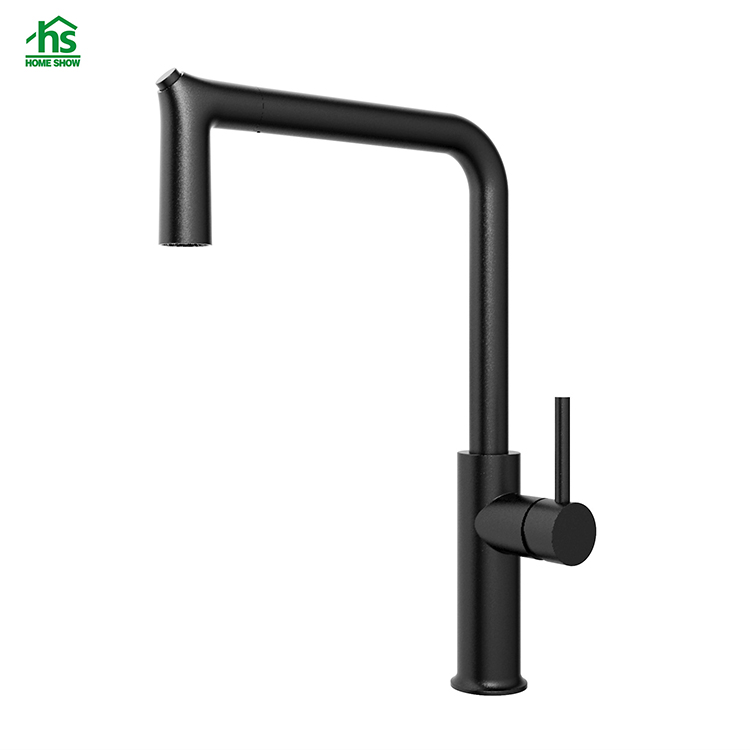 HOMESHOW
HOMESHOW  2024-10-22
2024-10-22
Copper porcelain core, 300,000 flexible switches, 12 micron coating thickness, department stores, specialty stores, hardware stores are all over the city streets, no matter the price, the appearance of the kitchen faucet has become bright and luxurious. Cleanliness and comfort are at the heart of modern life, so bathroom utensils should be of higher quality
A closer look at the market: excellent shape, well-defined
From the perspective of the new faucet market, these water-saving faucet end guards have three characteristics:
Novel structure. Most new faucets are made of stainless steel or copper ceramic sheets. The switch and water temperature control of the kitchen faucet are adjusted by moving two ceramic chips back and forth. Some kitchen faucets come with stainless steel grilles for the spout. The drained water is in the form of a flexible foam.
It has multiple functions. New faucets, such as the sensor series, are commonly found in bathrooms in hotels and shopping malls. The faucets used in the kitchen are all rotatable with long spouts and are installed between the two washbasins. It can be called a pull-out faucet, a 360-degree rotatable faucet. This is called a pull-out swivel faucet. It can be flexibly called while reducing the space occupied. There are new types of basin faucets. The faucet comes with a hose, similar to a shower, and is in excellent shape. Most new faucets are sleek in shape and come in a variety of colors, adding decorative features to the faucet. Some faucets are plated with titanium, chrome, lacquer, porcelain, etc.; in addition to the common streamline and duck tongue, there are spherical, elongated cone, inverted triangle and L-shaped faucets.

Spool: 300,000 Flexible Switches Most new faucets today have stainless steel or copper ceramic cores. The faucet has two ceramic plates that are always close to each other. The opening and closing of the faucet and the adjustment of the water temperature are controlled by the movement of the two ceramic plates. One piece can slide in different directions, while the other is fixed. The fixture has three holes, one for hot water, one for cold water, a third for the water outlet, and the other has only one hole. In this way, the two ceramic sheets can direct different amounts of hot and cold water to the outlet holes to mix with the different contact areas, thereby controlling the water temperature. Due to the high wear resistance of the ceramic sheet, this faucet lasts much longer than a cast iron faucet. The international standard is 300,000 switches
The new faucet is not only novel in structure, but also beautiful in appearance. Prominent trim is another novelty of the faucet. The surfaces of these faucets are gold-plated titanium, chrome-plated, painted, and porcelain-plated, among which stainless steel chrome-plated is the most common. Colored faucets are also very popular. Its colors are red, yellow, black, blue, etc., which can be matched with other appliances in the bathroom and kitchen to play an embellishing role. In terms of shape, the handles and outlet pipes of the faucet are varied, and most of them are streamlined. The higher the product, the more unique the shape
The reason for the high price: The price of a new faucet with a plating thickness of 12 microns is also very high, ranging from tens of yuan to two or three yuan. High-end four or five dollars. The import value can reach about 1,000 yuan. The difference between domestic and imported products: - Appearance. Imports have a sleeker, sleeker, sleeker look and a more modern, sleek profile. The second is the accuracy of parts assembly. Most of the imported ones are cast in bronze, while most of the domestic ones are cast in brass. When buying, it's all about feel. The switch should feel soft and easy. If it feels rough or too light, the assembly is poorly constructed. When buying, don't blindly recognize the low price. Low-quality, inexpensive faucets tend to rust and have a short lifespan. Buy as much as possible in specialty stores
The quality of electroplating of faucets at different prices is also different. Generally speaking, the main raw materials of faucets are divided into miscellaneous copper and pure copper, and the more advanced one is the mixed material of copper and nickel. Pure copper is not easy to corrode and oxidize. After many times of polishing, it is conducive to electroplating. The plating quality is better than miscellaneous copper. In addition, the coating thickness is also very specific. Generally speaking, the faucets produced by small manufacturers with small scale, poor equipment and weak technical force have a coating thickness of only 3 to 4 microns, which is easy to oxidize and corrode. At present, the international standard for electroplating thickness of faucets is 8 microns, preferably up to 12 microns.